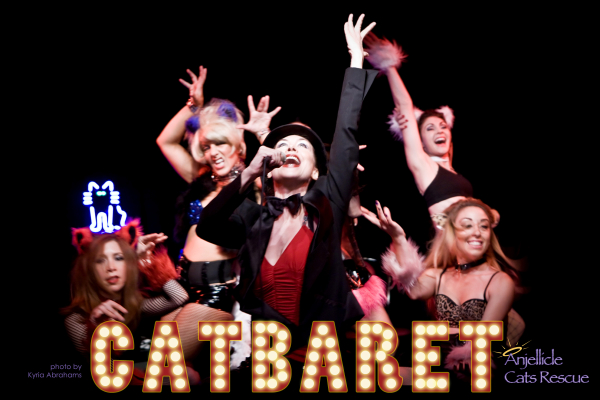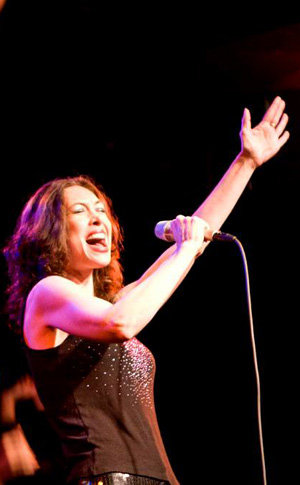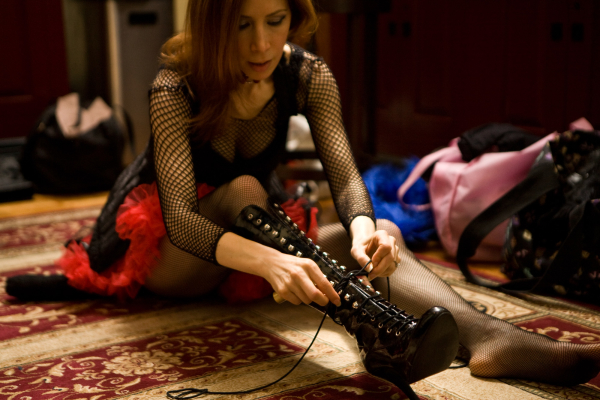Life Is a Catbaret, Old Chum. Come to the Catbaret.

(© Kyria Lydia Abrahams)
While the name of the organization might make you think of a certain Andrew Lloyd Webber musical, Anjellicle Cats Rescue spends only one night a year singing and dancing: its annual Catbaret will take the stage at Stage 72 on October 9. This one-night-only event brought in $6,000 last year. This year the show hopes to raise even more, with all of the proceeds going to support the organization's mission.
Anjellicle Cats Rescue is a no-kill, all-volunteer not-for-profit that finds temporary and permanent homes for abandoned cats and kittens in New York City. Unlike many shelters, Anjellicle continues to offer a range of services even after the ink is dry on the adoption. The organization has also gained a reputation for taking on cats that some people would call "unadoptable" and successfully finding them families. (Full disclosure: This author has adopted two cats through Anjellicle and has been consistently astounded with the level of veterinary support it offers.)
TheaterMania spoke with producer Laura MacLean about this year's Catbaret, the event's growth over the last five years, and the biggest cost to the organization: medical bills.

(© Kyria Lydia Abrahams)
How does Anjellicle Cats Rescue work?
The organization focuses on saving abandoned cats in the New York area. A lot of animals are found abandoned on the streets and in apartment buildings, believe it or not. They're often brought into a shelter. We do the best we can to take in animals from the shelters and get them the medical care they need. We don't have a building facility, so we rely on fosters [people who temporarily host the cats in their homes]. That's how we're able to save these animals.
Your organization's name is reminiscent of the Broadway musical Cats. Is that just a coincidence?
Kathryn Willis is our director and she is a huge Broadway fan. She's been doing Broadway Barks for years through our contacts within the Mayor's Alliance. Bebe Neuwirth has also been very supportive of us.
Where did the idea of a Catbaret come from?
Stephanie Sellars produced the first few Catbarets. She came up with the name. Both she and her husband will be performing in this year's show. I came into the organization after they had just done their second Catbaret.
How has the event evolved over the last five years?
Getting Stage 72 to donate their space was a big win last year. They've done that again this year. So we're really excited about stepping it up.
What can we expect at the show on Thursday?
This year's theme is French cabaret. We're starting at the origins of the form: the Moulin Rouge and the Chat Noir, at the turn of the century in Montmartre, when it was very scandalous. We have [artist] Toulouse-Lautrec greet the audience in French. We have can-can dancers. We're moving through time as each act takes the stage, finally ending with a modern version of the Moulin Rouge, as it was depicted in the Baz Luhrmann film. HBO was generous enough to donate set pieces from Boardwalk Empire. We were able to pick what we wanted, so we have several things from different scenes. The production is a much higher-level than it was last year.
What percentage of the proceeds will go to the organization?
One hundred percent. I'll tell you how we did that: We're getting the theater for free and we sold enough program ads to cover the cost of the production.
How will Anjellicle Cats spend the money?
Veterinary bills make up our biggest expense. A lot of these animals come from poorer communities, where taking animals to the vet or even neutering is not common. We will take in an animal and suddenly find out the whole mouth is infected and all the teeth need to be pulled. That's a thousand-dollar procedure. We have to send the cats to the vet and get them the medicine they need. That's part of our mission.
How can people help out beyond buying a ticket to Catbaret?
We always need fosters. New York City is a transient town, and sometimes our animals suffer for that. A lot of times someone moves out of the country and they dump their cat at a shelter. So we go get them. But we can also use transience to our advantage: We've had several fosters who were just in town to work for a few months. They really missed their cats at home and helped foster one of ours for the times they were in the city. That animal gets a respite at this person's home for three months while we get them adopted. Those situations are godsends.

(© Kyria Lydia Abrahams)










